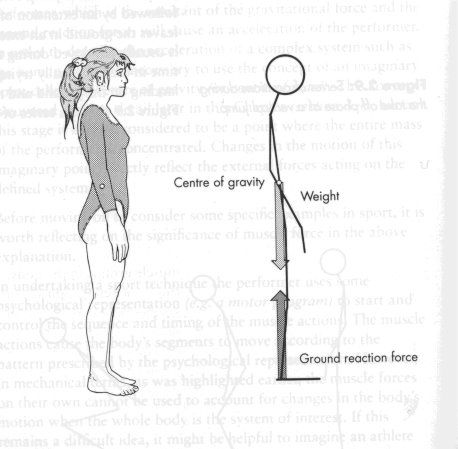Free Body Diagrams
FBD - Free body diagrams
If you have been following the recommended order in the support package, one of the tasks that you will have undertaken will have been to draw vector representations of forces on to a diagram of a performer preparing to jump. In that diagram you should have shown two pairs of forces and should have have represented two objects. Such a diagram is good for gaining an understanding of the paired relationship of forces but limited in value when you are trying to explain the motion of a particular object. In this latter case what you really want to show are just the forces acting on the selected object or as it is sometimes called the 'free body' - i.e. the object of interest is considered as being isolated from its context and only the external forces acting on it are shown. For example the figure below shows a free body diagram for the image used at the end of the Newton's Third Law section.

Note that the diagram only shows the forces acting at one particular instant in time.
TASK: Watch the video clip of the jump and reflect back on the bathroom scales task in the Newton's Third Law section. It should be apparent that during the jump (take off phase) the ground reaction force will vary. That is, as the jumper pushes more or less hard on the ground so, the ground will push more or less hard on the jumper. Using a sophisticated piece of equipment called a force platform (very expensive bathroom scales!) sports scientists can measure how the ground reaction force changes. The diagram below shows an idealised ground reaction force trace during the the vertical jump movement from a stationary start to the point of take off.

TASK: Draw five free-body diagrams which correspond to the five positions shown in the figure above.